“Overthrowing the standard War Department policy”
A news clipping taped to a letter immediately caught my attention. The letter, written by Retired Lt. Gen. Charles D. Herron to Gen. George C. Marshall in August 1944, discussed the service of Japanese-Americans in the U.S. Army. The clipping detailed awards presented by Gen. Mark Clark to soldiers of the 100th Battalion of the 442nd Regimental Combat Team. Herron, who had commanded U.S. forces in Hawaii before World War II, remarked that the clipping “perfectly confirmed your wise decision to allow the Hawaiian-Japanese to be trained for battle, overturning the longstanding War Department policy.”
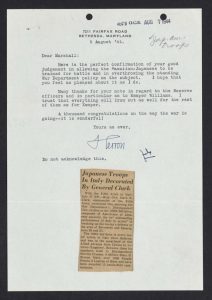
In the early days of World War II, men of Japanese descent were classified as 4C, or “enemy alien.” In 1942, the Board of Military Utilization of U.S. Citizens of Japanese Ancestry, comprised of five Army colonels and a war relocation authority, convened to consider potential changes to this classification. They ultimately issued a report denying Japanese-American men the right to serve, citing “the universal distrust in which they are held.”
A month after the report was released, an official from the Office of War Information wrote to President Franklin D. Roosevelt, urging the creation of a Nisei (children of Japanese immigrants with U.S. citizenship) combat unit to counter claims of American racism. On February 1, 1943, Roosevelt announced the formation of the 442nd Regimental Combat Team, an all-Japanese-American unit led by white officers. Although the President had previously signed Executive Order 9066, which resulted in the internment of U.S. citizens of Japanese descent, he declared on February 1 that “no loyal citizen of the United States should be denied the democratic right to exercise the responsibilities of his citizenship, regardless of his ancestry.
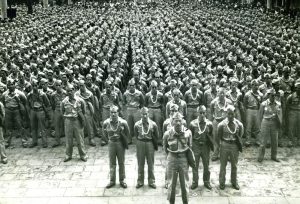
The principle on which this country was founded and by which it has always been governed is that Americanism is a matter of the mind and heart; Americanism is not, and never was, a matter of race or ancestry.” Applicants to the 442nd Regimental Combat Team had to meet stringent loyalty requirements, including answering a questionnaire that asked if they were willing to serve anywhere and if they swore complete allegiance to the United States. This questionnaire angered many enlistees, as these questions were not asked of all soldiers, and as U.S. citizens, they felt their loyalty should not be in question. Despite this, more than 10,000 volunteers applied for the new unit, four times more than the available spaces. Two-thirds of the applicants were residents of Hawaii, while one-third came from the continental United States, many from internment camps. The unit adopted the motto “Go for Broke.” However, some Issei (Japanese immigrant) parents were uneasy with the unit’s designation as “442,” as the word for “four” is a homophone for the word “death” in Japanese.
On March 28, 1943, the Honolulu Chamber of Commerce held a farewell ceremony for the 2,686 Nisei volunteers from Hawaii in front of Iolani Palace, the governor’s office. The Honolulu Star Bulletin described the day as follows:
“No scene in Honolulu during World War II has been more striking, more significant, than that at the territorial capitol grounds on Sunday. It was not just the size of the crowd, estimated between 15,000 and 17,000 … it was, most notably, the evident pride of the families and friends of these young Americans – their pride that these youths have been entrusted with the patriotic mission of fighting for their country and the Allied nations.”
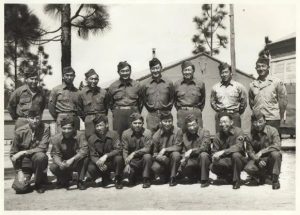
The 442nd Regimental Combat Team trained at Camp Shelby, Mississippi, for a year before being deployed to Europe in June 1944. They participated in the Rome-Arno Campaign in July, fought in the battles of Bruyeres-Biffontaine, and took part in the Gothic Line and Po Valley campaigns. Their most renowned action occurred in October 1944, with the rescue of the Lost Battalion in the Vosges Mountains of France.
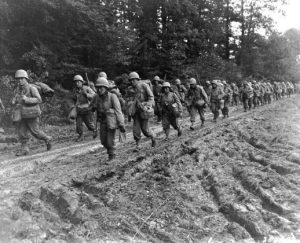


Two hundred men of the 141st Regiment found themselves stranded in the Vosges Mountains of France. In rain and freezing temperatures, soldiers from the 442nd Regimental Combat Team climbed uphill, battling for small gains each day over the course of 10 days, all while under relentless German artillery fire. Their efforts culminated in the successful rescue of the trapped unit. At a subsequent awards ceremony, the officer presenting the honors was dismayed by the small number of 442nd soldiers in attendance. He was informed that the rest were either in the hospital or had lost their lives in the rescue.

By the end of the war, the 442nd Regimental Combat Team had earned over 4,000 Purple Hearts, eight Presidential Unit Citations, 559 Silver Stars, and 52 Distinguished Service Crosses, along with numerous other honors and decorations.
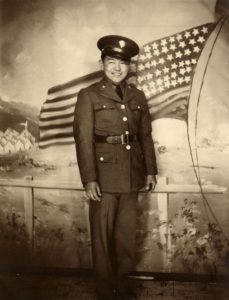
Only one member of the 442nd received the Medal of Honor, and it was awarded posthumously: Private First Class Sadao Munemori. He single-handedly destroyed a German machine gun emplacement, and upon returning to his fellow soldiers huddled in an artillery crater, he threw himself on a grenade, dying instantly but saving the lives of those around him.
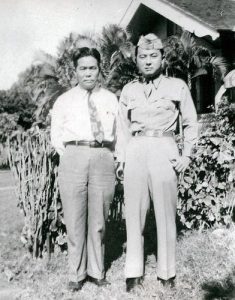
A much later review of the 442nd soldiers’ wartime bravery led to the awarding of 20 additional Medals of Honor, including one to former Senator Daniel K. Inouye of Hawaii. The 442nd Regiment remains the most decorated unit for its size in U.S. military history.
Sources for this blog include *The Densho Encyclopedia* (https://encyclopedia.densho.org/)
and *Unlikely Liberators: The Men of the 100th and 442nd* by Masayo Umezawa Duus.

